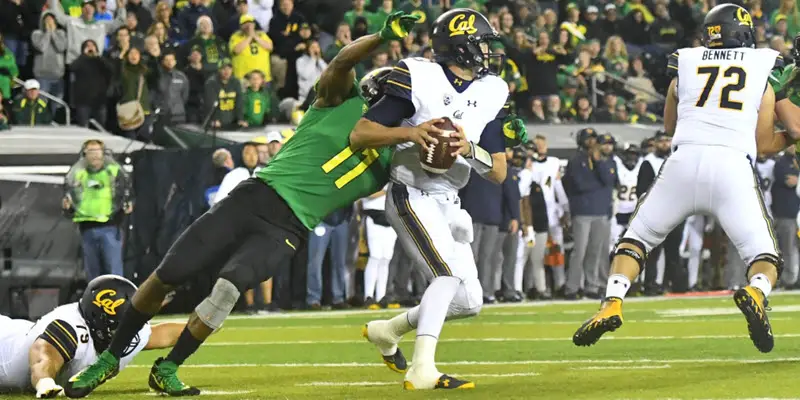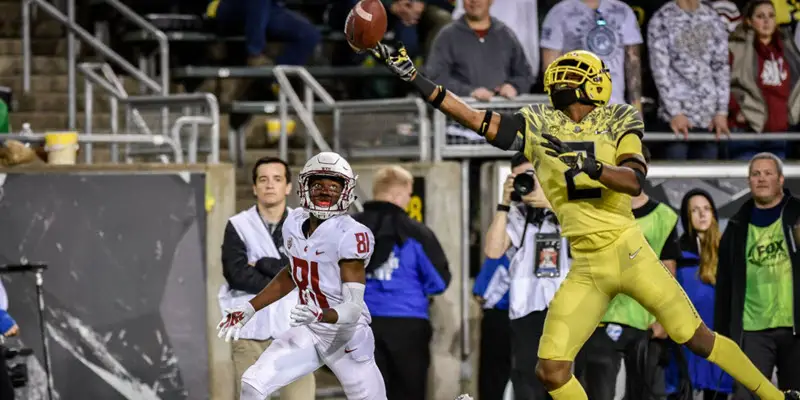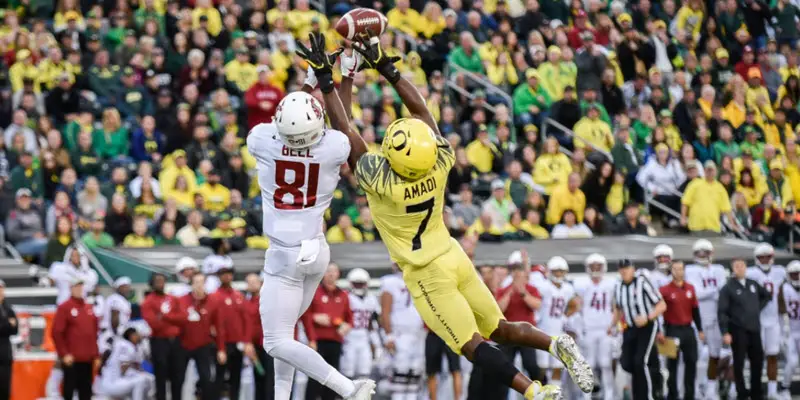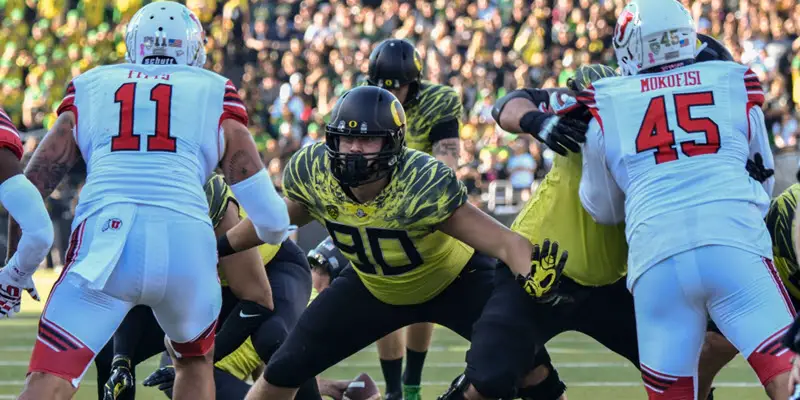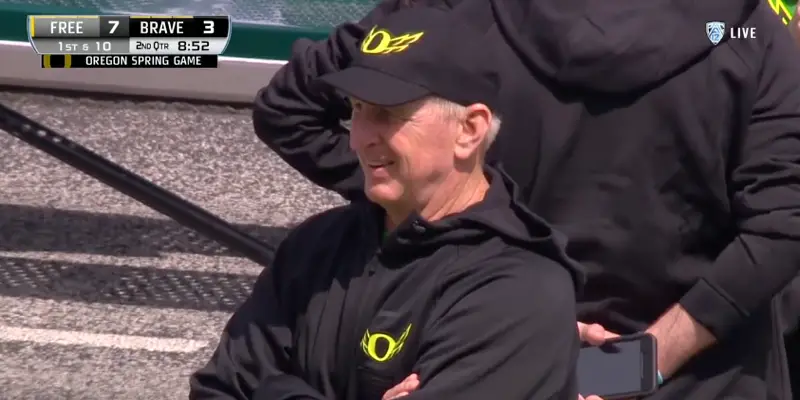In the previous two posts, we covered Jim Leavitt’s coverage structure with 2-high safeties. Now we are going to cover his main coverage concepts with 1-high safety. Leavitt primarily runs 1-high safety looks in run-first down-and-distance situations and when he is going to blitz. Leavitt ran two forms of Cover 3 when sending four rushers, both of which operated by …
The Jim Leavitt 3-4 Defense: Trips Coverage with Two-High Safeties
In the previous post, we explained how Jim Leavitt‘s 2-high safety coverage concepts operate for when there are two receivers to a side. Now we will be covering his 2-high safety coverage concepts for when there are 3 receivers to a side, most commonly known as Trips coverages. The Trips Coverages With 2-high safeties, Jim Leavitt will run: (a) Stubbie, …
The Jim Leavitt 3-4 Defense: Triangle Coverages with Two-High Safeties
Now that we have covered the general structure and defensive fronts used by Oregon defensive coordinator Jim Leavitt, we will begin delving into his coverage schemes in the next several posts. In this analysis, we will be exclusively featuring his triangle coverages: 3 defender over 2 receiver coverage concepts. (The inside “receiver” here can be either a slot receiver or …
Understanding the Jim Leavitt Defense: Oregon’s Defensive Fronts
After we covered Jim Leavitt‘s overall structure in our first analysis, we will now get into where it all starts: up front and in the middle. While Jim Leavitt primarily runs what we will be calling a 3-4 Base defensive front, he has four others he can use situationally in order to put his players in the best position. These four …
Understanding the Jim Leavitt Defense: Oregon’s Basic 3-4 Structure
Being that I live in Oregon (though not a Duck fan myself), I’ve had a sort of voyeur interest in watching both the collapse and rise of Oregon’s defense in recent years. For a decade and a half, the Ducks defense was guided by the adaptive hand of Nick Aliotti. Following his departure, Oregon enjoyed one more good year on …

